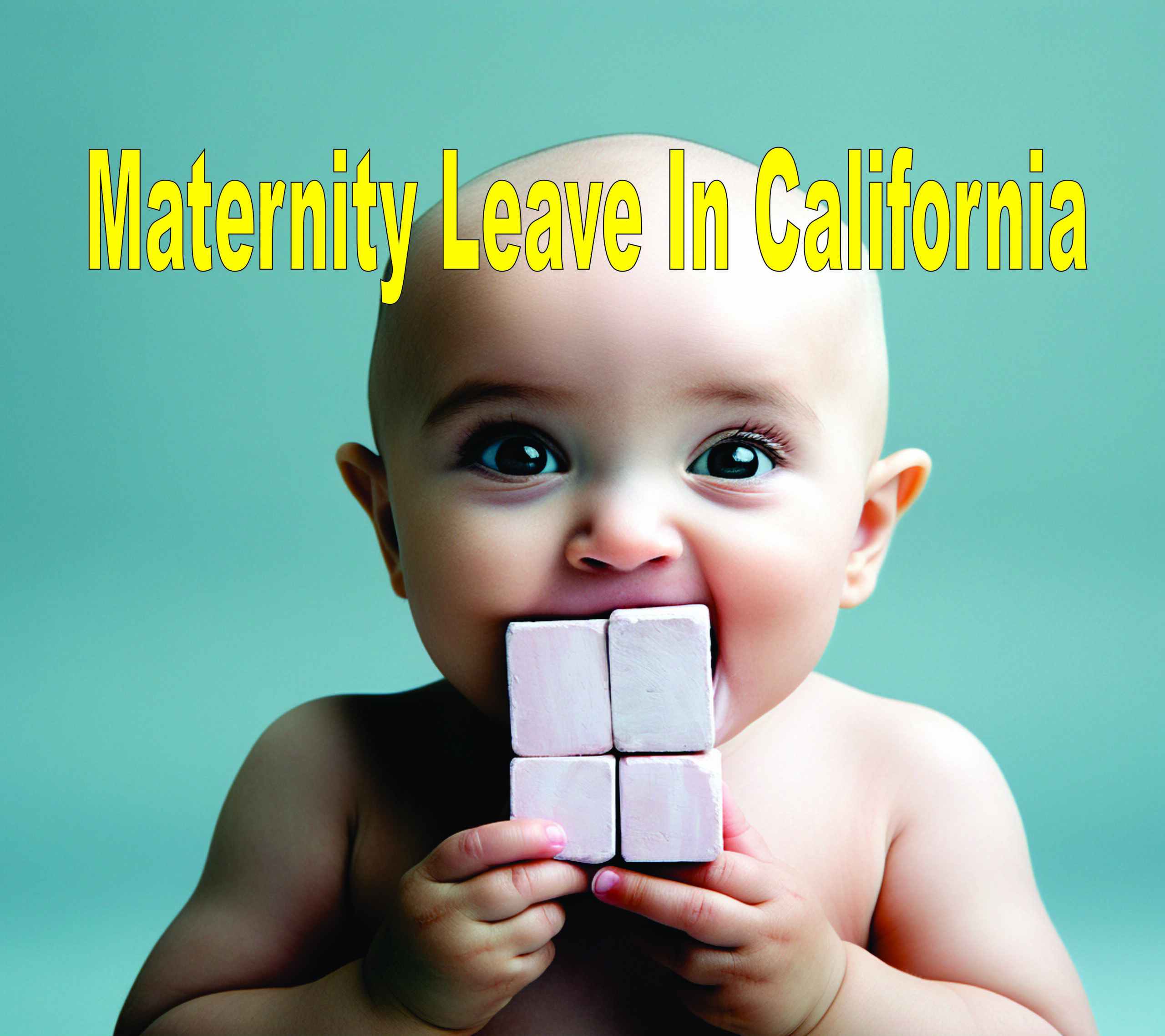Last Updated on January 23, 2024 by Lori Pace
California Family Rights Act: Employees can take up to 12 weeks of parental leave following the birth or adoption. Paid Family Leave (PFL) is a California program that allows you to receive part of your pay while you are away from work and bonding with your baby. If you are pregnant and have a disability that affects your ability to give birth, you might be eligible for benefits from Disability Insurance (DI).
Maternity Leave in California
Paid Maternity Leave in California: Understanding Your Entitlement
As someone who has worked in various companies in California, it’s important to note that some employers may offer paid maternity leave. I recommend checking your employee handbook for specific policies. While many employees can avail of up to eight weeks of partial pay per year, starting from six weeks in 2020, it’s worth exploring additional unpaid time options that may be available to accommodate your individual needs during this special time.
What amount will I get paid?
Your employer is allowed and encouraged to cover your entire salary and benefits. It is possible for your employer to pay all of your salary and benefits, but this is rare. You will still get some income from your employer, even if they don’t offer paid time off (or it’s very low), during your maternity leave.
As someone who has closely reviewed the California wage calculation for maternity leave, it’s essential to note that individuals earning less than one-third of the average quarterly state wage ($5,998.57) can receive approximately 70% of their weekly wages for up to eight weeks. Similarly, those earning more than one-third of the average quarterly wage in the state will receive around 60% of their weekly wages during the same period. This represents an increase from the previous weekly salary of 55%, ensuring improved support for parents during their leave.
Also, more families should be able to take paid leave if they have a higher salary.
However, the maximum amount of reimbursement is limited to $1,357 per workweek. This means that if you are a high-earner, you might receive a lower percentage.

Do I have any guarantee that I will get a job upon my return?
The 2018 state’s Parent Leave Act, (PLA), expanded the CFRA’s coverage to include smaller businesses. If you have been employed by your employer for at most 12 months, have worked a minimum of 1,250 hours in the last 12 months, and work for an employer with at least 20 employees within a 75-mile radius of your workplace or 50 employees elsewhere in California, it will protect your job while you are on maternity leave. The Small Business Association reports that more than 80 percent of Californian employees are covered by either PLA/CFRA.
When can I take my leave while I’m still pregnant?
As someone who has undergone pregnancy and explored maternity leave options, it’s essential to understand that Paid Family Leave (PFL) cannot be utilized while you are still pregnant. In such cases, if you have medical conditions restricting your ability to work or your doctor certifies that you are unable to work due to pregnancy-related issues, you may be eligible for paid Disability Insurance (DI) benefits. Typically, DI benefits become accessible around four weeks before your due date and can last up to six weeks, depending on the method of delivery. However, it’s crucial to note that PFL benefits can be accessed earlier if you experience specific pregnancy-related medical conditions.
Do I have to take my leave at once?
It’s not possible. California law allows you to use DI intermittently for hours, days, or weeks. This is useful if you have to be treated multiple times for a condition during pregnancy. You can also break up your PFL leave. You and your spouse may decide to split the leave. Maybe you will take four weeks and he will take four. Then you’ll switch sides. The CFRA states that even though such an arrangement may be disruptive for your employer you are still allowed to do it.
Can I use only part of the benefit or is it all or nothing?
You can still use part of the benefit if you need to return to work after your full leave ends. If you are unable to afford 60 to 70% of your PFL pay, you might consider using this benefit. You can keep the rest of your leave in reserve if you decide to return to work after you have used all your leave. This is as long as you take your benefits within 12 months of your baby’s birth or your adoption/foster care placement. This could be useful for another purpose such as when a family member is critically ill or you have to take part in a qualifying military event.
Can my spouse get parental leave?
Absolutely, the law applies to both men and women for straight and mixed-sex families. Many families choose to let one parent go on leave first and then have the second parent return to work. You’ll both get eight weeks of paid vacation, even if you work for the same company.

What happens if I adopt, foster, or use a surrogate to help me?
As someone who has personally experienced the process of adopting a child in California, I can confirm that the state provides financial support for various family-building options, including adoption, surrogacy, foster parenting, and pregnancy. To access these benefits, you’ll need to provide the appropriate documentation, such as birth certificates or adoption papers.
Does it cover anything besides welcoming a new child?
CFRA provides bonding time with a child when they are born, but also covers care for someone close to you, such as parents, spouses, or domestic partners. The benefit does not cover grandparents, parents-in-law, and grandchildren. The new, more comprehensive PLA does not cover caring for children. If you work for a smaller company, your job protection may not apply to caring for other family members.
You are not covered by PFL if you become ill, but you might be eligible to file a claim for DI. While DI is not available for as long as PFL, you will still receive approximately 60-70 percent of your weekly wages, up to a maximum amount of $1,357 per workweek.
Can I combine this with the federal Family and Medical Leave Act (FMLA) or any short-term disability benefits I may be entitled to?
You must simultaneously take your FMLA leave and PFL leave if you’re also eligible for FMLA, which offers up to 12 weeks of unpaid leave. Let’s say that you have taken eight weeks of paid leave in California. If you are eligible for federal leave, you can take four more unpaid FMLA weeks.
If my company pays for some portion of my leave, does the state law cover the rest up to 100 percent of my salary?
As someone with a background in employment law and personal experience with California’s Paid Family Leave system, I can confirm that receiving more than 100% of your salary is not possible. Employers have the option to coordinate benefits with the state’s Employment Development Department (EDD), ensuring you receive the appropriate California law-compliant partial salary. Your employer may choose to bridge the gap between your full salary and the Paid Family Leave benefit, although they are not legally obligated to do so. It’s important to note that failing to pay the difference may impact your PFL benefits, and as such, it’s advisable to communicate with your employer regarding this matter.
You should note that although you are receiving PFL your job is not covered unless you work for an employer who is covered under other California laws or FMLA.
Is the leave pay taxed?
PFL benefits can be reported to the IRS (the Federal Government), but not to California (the California State Franchise Tax Board). Based on my own experience and research, Disability Insurance (DI) benefits are reported to the IRS (the Federal Government) but not to California’s State Franchise Tax Board. It’s important to note that DI benefits can only be reported to both entities when used to replace Unemployment Insurance (UI). As someone who has navigated this process, I can confirm that if you were receiving UI benefits while unemployed, your DI benefits could be reported to the IRS.
What do I have to do to get the money and by when? How am I paid?
As someone who has successfully applied for Paid Family Leave in California upon welcoming my child, I can share that you can initiate the claim process as soon as your child arrives. Eligibility requirements will need to be met, and documents like birth certificates or adoption papers are typically uploaded for verification. From my experience, benefits are usually processed and issued within a prompt two-week timeframe after submitting the claim.
Are there any monetary caps on the benefit annually or during one’s lifetime?
Yes. For eight weeks, the maximum weekly amount that you can receive under PFL is $13,357 After a year, however, you can begin again.
With my personal understanding of California’s Paid Family Leave system, it’s important to highlight that the law accommodates taking time off for various family situations, such as having multiple children or requiring extended leave periods. A significant advantage is that there’s no limit on the number of times you can apply for Paid Family Leave, nor is there a restriction on the amount you can receive in reimbursements. However, it’s crucial to be aware that you need to wait for 52 weeks after utilizing all your leave within a year to become eligible for another leave period. For instance, if you took eight weeks of leave starting from January 3, you wouldn’t qualify for another leave until January 3 of the following year.
Do I still receive my benefits while I’m out?
For sure! You can still accrue seniority and benefits under PFL or CFRA if your employer allows you to accumulate other relief. Continue to receive health insurance benefits while on leave. You won’t be eligible for unemployment insurance or worker’s compensation benefits.
How is this paid for?
PFL is funded by a deduction taken from your paycheck. The deduction is not optional. You will have to pay for it for the rest of your life. However, your non-parent friends cannot say that they won’t contribute. When you turn the benefit over to you, the money will be there. It works in a similar way to property taxes. Even though your children might not attend public school, or you may not have children, you still need to contribute to the school system.
What amount will each paycheck be deducted? If you earn $50,000 annually, your annual contribution will be approximately $600 or $11.54 per workweek.
If I have further questions, where can I go?
With my first-hand experience in navigating maternity leave in California, I recommend starting by contacting your company’s Human Resources department. The employee handbook can be a valuable resource if you prefer not to disclose your pregnancy until later. Additionally, for specific inquiries about the California Family Rights Act (CFRA), Paid Family Leave (PFL), Pregnancy Disability Leave (PDL), and Parental Leave Act (PLA), the official California state website provides comprehensive information you can trust.
How does California’s paid leave compare to other states?
California is not the only state that allows parents to both earn a paycheck and bond with their baby.

